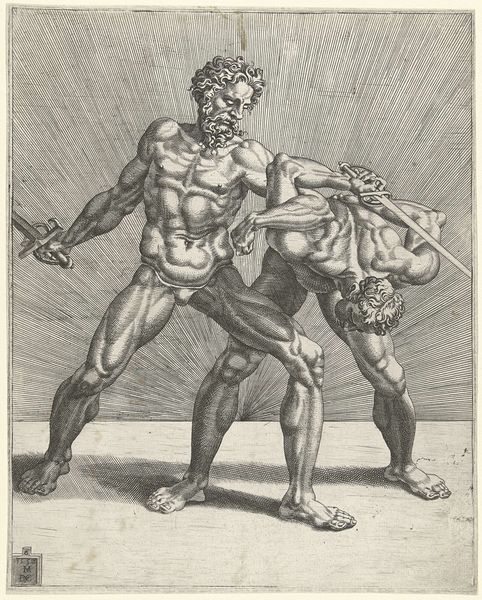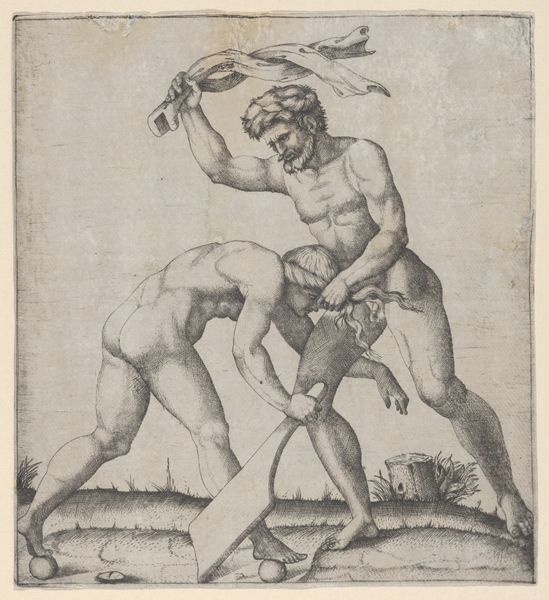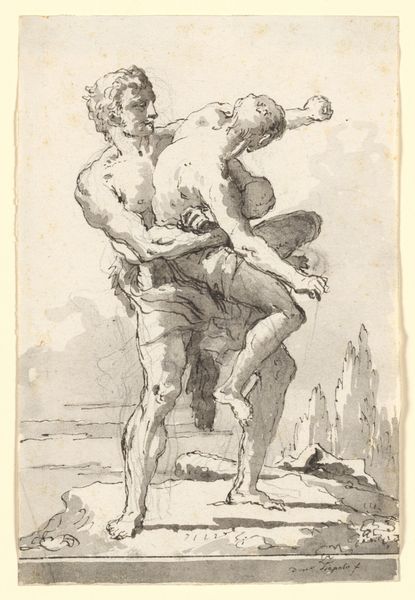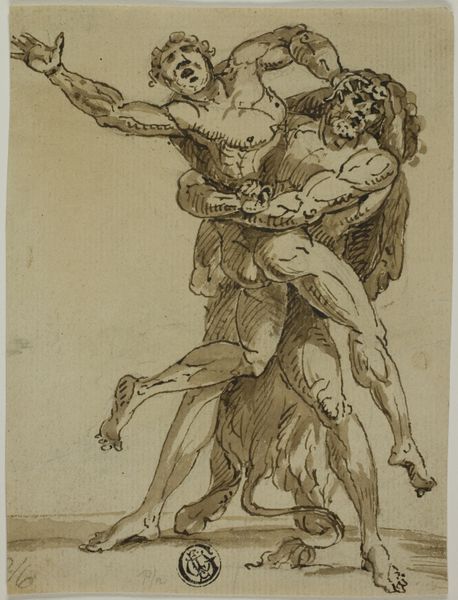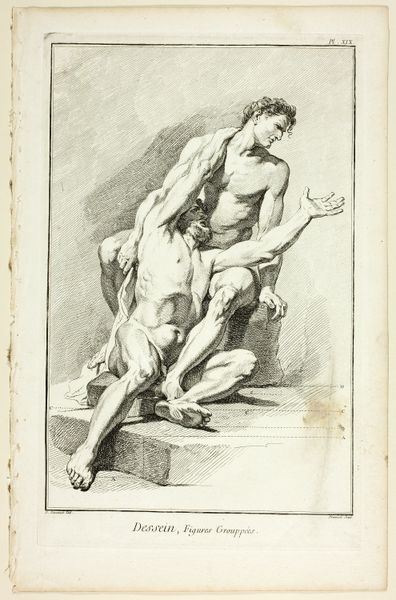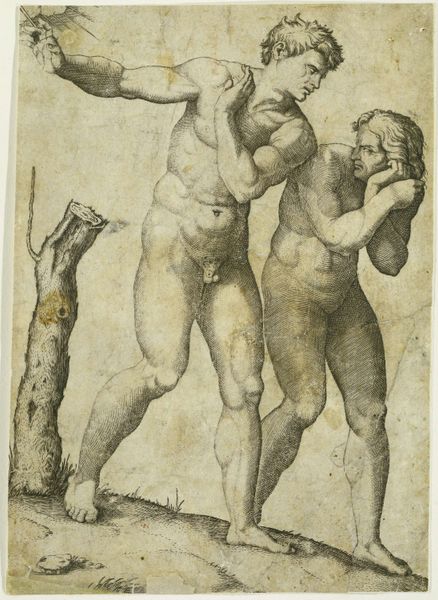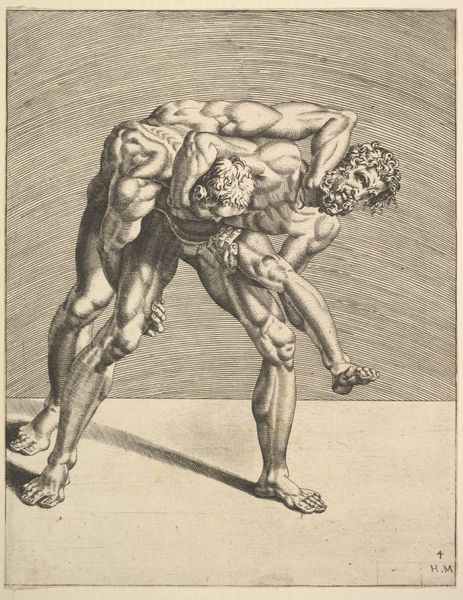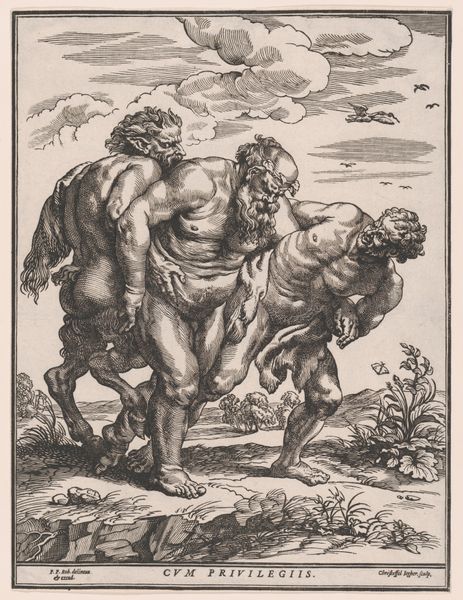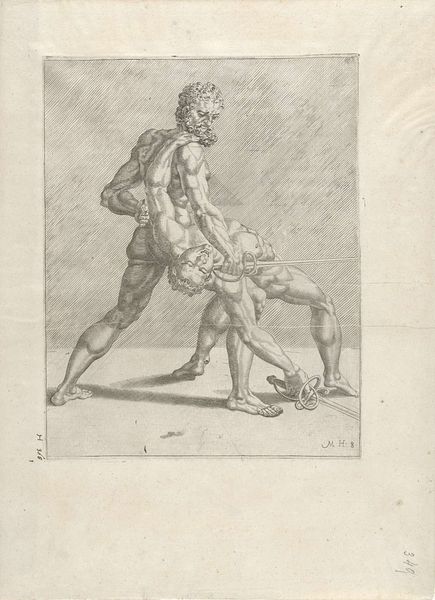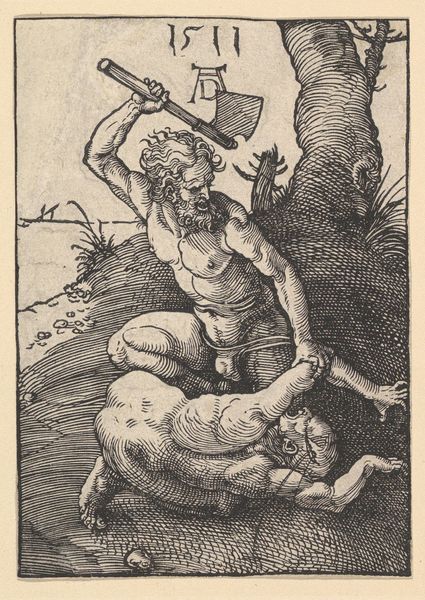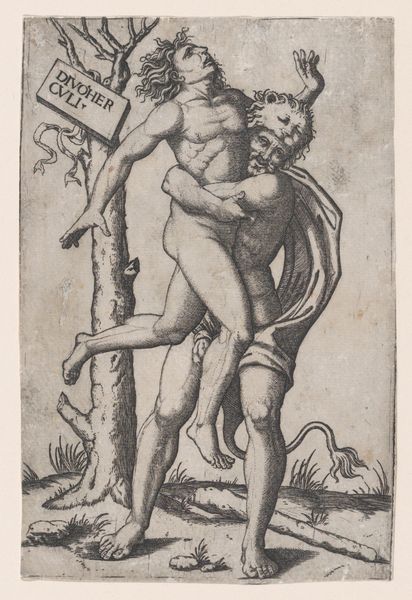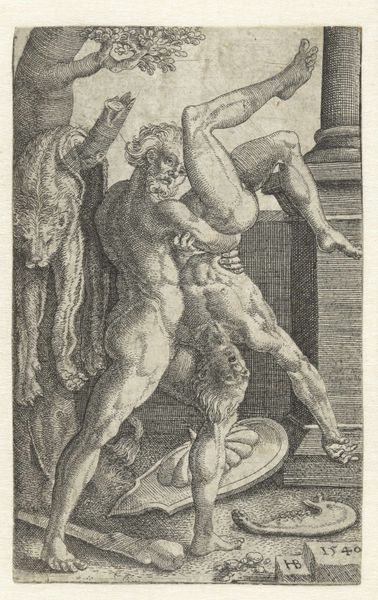
drawing, print, etching
#
drawing
# print
#
etching
#
mannerism
#
figuration
#
11_renaissance
#
line
#
history-painting
#
nude
Dimensions: Sheet: 9 13/16 x 7 11/16 in. (24.9 x 19.6 cm)
Copyright: Public Domain
Editor: So, this is "Two Fencers, from Fencers, plate 8," made by Dirck Volckertsz Coornhert in 1552. It's an etching, quite graphic, with strong lines. What do you make of this depiction of physical dominance? Curator: It immediately brings to mind the social context of the Renaissance. This print wasn't just about illustrating fencing; it participated in the ongoing dialogue around humanist education. Editor: Humanist education? Curator: Absolutely. Physical prowess, especially among the elite, was a vital component. The idealized male nudes evoke classical ideals, recalling Greek wrestling matches, and athletic competition in general. This would have resonated deeply with the print's intended audience, who saw value in the synthesis of mind and body. But, let’s also consider the politics of imagery, because this image normalizes ideals of masculinity and might even represent male on male love that had to be codified for social acceptability. What else stands out to you about its style and historical reference? Editor: I noticed how dynamic the line work is, especially when you realize this is an etching; and now you're saying this idealized portrayal would have bolstered a certain image the elite wished to project. The fencers' actions and poses become a kind of display? Curator: Precisely. The distribution and reception of these kinds of prints by collectors certainly shaped the cultural understanding of skill, athleticism, and ideals about manliness in Renaissance society. The plates became models for artistic interpretations across media for years to come. Editor: It’s amazing how something that looks like a simple scene contains so much about social and political life at the time. Curator: Yes, studying this print is more than a view of fencing, it reveals a world where images played an active role in constructing and reflecting elite masculinity. Editor: Thanks, I have to rethink everything I considered about imagery of masculinity from now on.
Comments
No comments
Be the first to comment and join the conversation on the ultimate creative platform.
